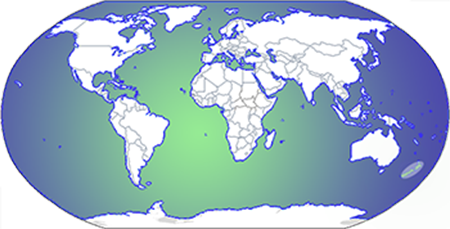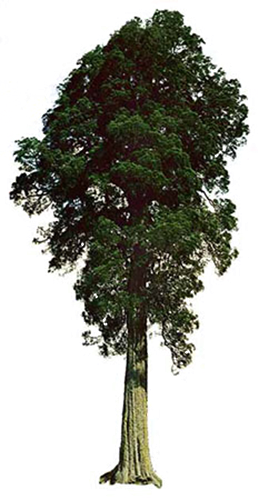Sub-antarctic to sub-tropical
Overview
The forests of New Zealand fall into two broad types, the conifer
hardwood forests dominated mainly by podocarps such as the timber
producing species totara, miro (Prumnopitys ferruginea) and rimu
(Dacrydium cupressinum) and the southern beech forests dominated
by one or more of the four indigenous species of Nothofagus.
The podocarps have an ancestry that goes back into the age of the
dinosaurs, being found as fossils from the Jurassic period 190 to 135
million years ago. These conifers are wind pollinated and evolved
before the true flowering plants.
»Follow this link to view a map with the locations of the collection highlighted.


Kauri (Agathis australis)
The kauri, today confined to the northern part of the North Island, once grew throughout New Zealand. Its close relatives are found in the tropics today, many on islands to the near north through to Borneo. These trees grow to enormous proportions. Some larger ones were worshipped as gods by the Maori, as evidenced by the specimen known as Tane Mahuta.
First used in 1772 by the French explorer du Fresne to replace his ship's mizzen mast and bowsprit, kauri and its close relatives became major timber species wherever they could be accessed. Once employed for virtually everything, kauri became scarce, and the industry declined in the 1920s. Mining kauri gum for varnish, from the enormous buried reserve left from the millions of years that these trees inhabited Northland, began to replace forestry as an economic activity.
Today, plantations of replacement trees are being grown on private land; all the trees on public land are protected. As kauri take over 100 years to mature, these are long term investments.
Occasionally buried logs of these former giants are dug out of the ground where they have lain for thousands of years and are milled.
Maori plant use and botanical names
On their arrival in Aotearoa New Zealand around 800 years ago, the Maori found much of the land was heavily forested. Trees supplied their building and sea craft needs as well as foods, fibres, tools, medicines, and dyes.
The Maori's centuries of inhabitation of Aotearoa New Zealand prior to the arrival of Europeans allowed them to establish which plants were useful to them, and to adopt some as part of their belief structure explaining the world. One group used extensively were the podocarps, a family of conifers with fleshy covered single seeded fruits.
Totara (Podocarpus totara) timber was prized by the Maori as being the best for building their massive war canoes, and was also the main timber used for carving. The long trunks of mature trees made it possible to build vessels that would carry up to 100 warriors. Maori custom demanded that when a totara tree was felled for timber a young seedling had to be planted in its place in order to appease Tane, the god of the forest, for removing one of his 'children'.
Kahikatea (Dacrycarpus dacrydoides) is a tree that grows to 48m tall with long clear trunks when mature. The fleshy part of the bright red fruit was eaten, but to harvest these the tree had to be climbed and the branches scoured. Although the kahikatea crops heavily, the price could be high, as harvesters could lose their grip and sometimes also their lives.
The Maori named trees for different characteristics and uses, so some botanically unrelated plants were grouped under a single descriptive name, such as mingi mingi or miki miki, for berry-bearing shrubs. These names remain in use and sometimes have been included in the botanical names.
»Follow this link to view the full (yet to be deployed) interpretive panel in PDF format.
